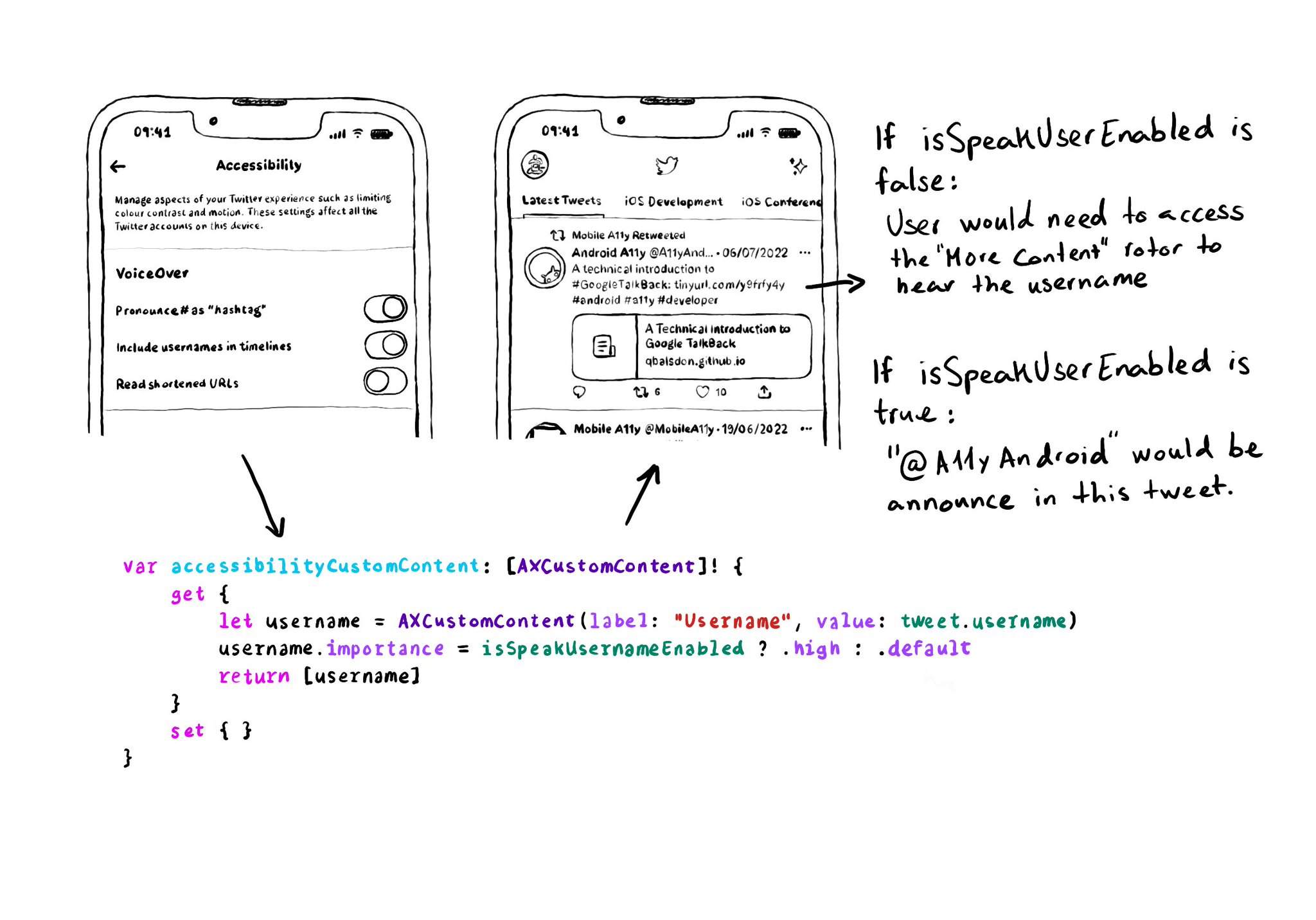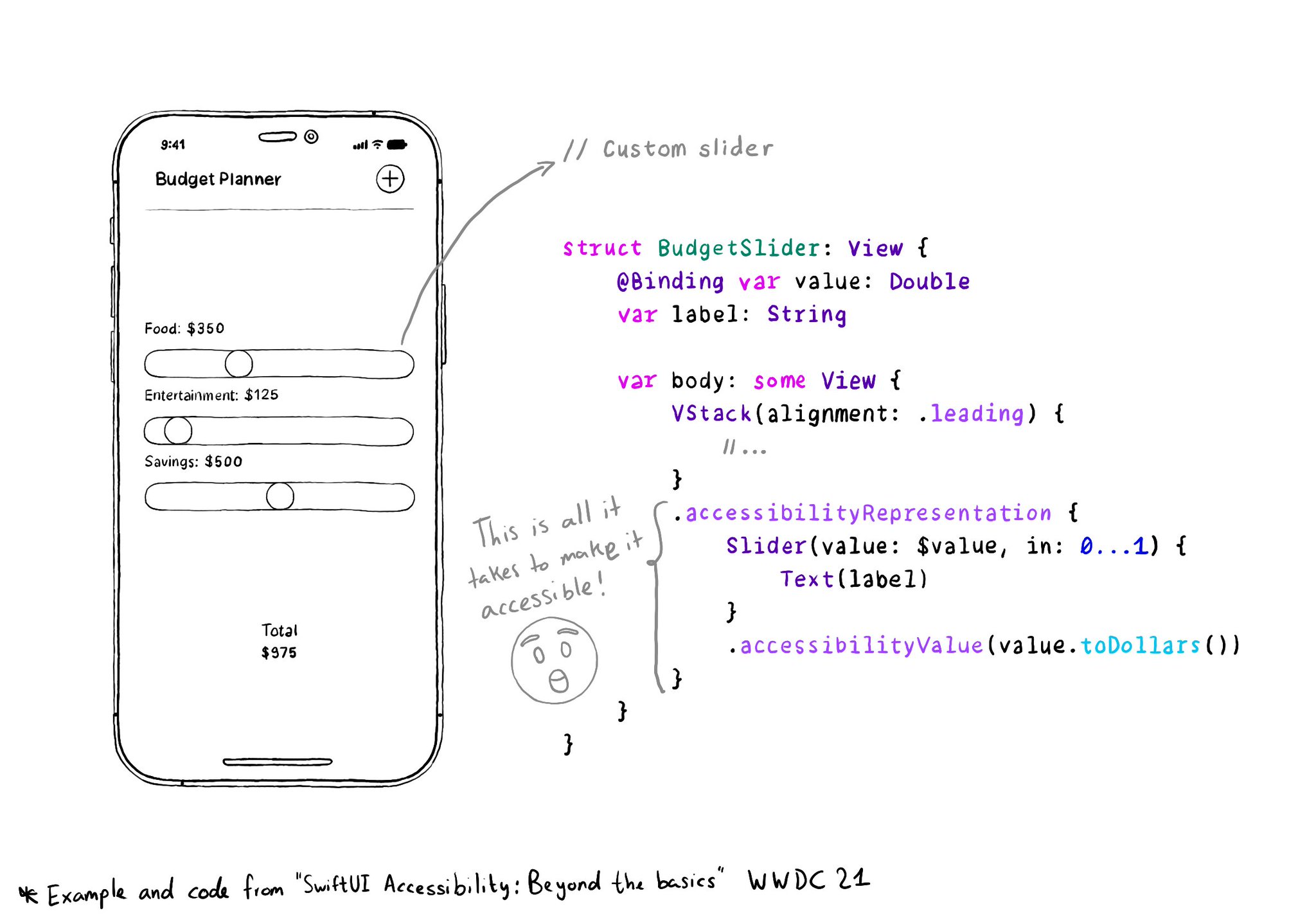Second day of @a11yTO! And again, lots of talks with a ton of practical information. So here's a thread with some of my highlights. And very proud that @spotifydesign was one of the sponsors! #a11yTOconf
You may also find interesting...
Today and tomorrow I'll be learning at @a11yTO. There haven't been any talks about iOS specifically. But I thought I'd share in a thread some of today's learnings that I think still apply when developing accessible apps for iOS. #a11yTOconf @a11yMel on continuous accessibility for quality at scale and reducing risks. Measure progress, but focus on people. When a measure becomes a target, it ceases to be a good measure. Accessibility is good for business but great for users. @annaecook talked about annotating designs for accessibility. Loved that she thinks of it as a communication and learning tool that can help divide the gap between design and development. I'd give it a go and see if it works for your team. Ann Mayer talked about writing accessible content. Technically compliant doesn't mean accessible. It is about being clear. The use of plain language principles, for example, is something that benefits everyone. @DavidOfYork has shown how deceptive patterns harm people with anxiety and panic disorders. If you spot any of these in your app, call them out and raise awareness. We all suffer eventually from anxiety, accessibility is for everyone. Michaela Peterhansl's practical guide for accessibility: Bring a11y to your daily work; you are not the only one responsible; ask questions; and find the people you can team-up with. "Don't forget: You can't do it alone", "Change is slow". @DDame on how to get stakeholders to invest in accessibility through storytelling and data: I may have a disability, but my money doesn't. Do we want to exclude users? Offer them a bad experience? No. We will all be disabled one day. Niki Ramesh gave useful tips to help you engage with a great a11y champions network. "Accessibility is not one person's job". Start informal/small, scale over time. Find representation across teams. Community, education, and recognition. @ShellELittle talked about hiring accessible designers but touched on some points that apply to anyone working on accessibility. It can't be done by one person or you risk burnout. Jennifer Payne on the importance of user research for building accessible products. Listen to users with disabilities. "Unless we consciously include, we unconsciously exclude". @svinkle showed how important it is to shift accessibility to the left (early in the process) so you get more voices involved through ideation, prototyping, and design. And remember to prioritize progress over perfection.

When creating AXCustomContent objects for accessibilityCustomContent, you can specify the importance of the data. If it is high, it will always be presented by VoiceOver. You could potentially ask the user if that data is of importance to them.

With accessibilityRepresentation(representation:), you can create a custom component and it can be perceived by assistive technologies as the view you pass as representation. No need to manually configure accessibility attributes. It is one of the most interesting additions to SwiftUI to help you develop accessible UI components. If your custom component behaves similarly to a native one, this is the way to go. https://developer.apple.com/documentation/swiftui/view/accessibilityrepresentation(representation:)